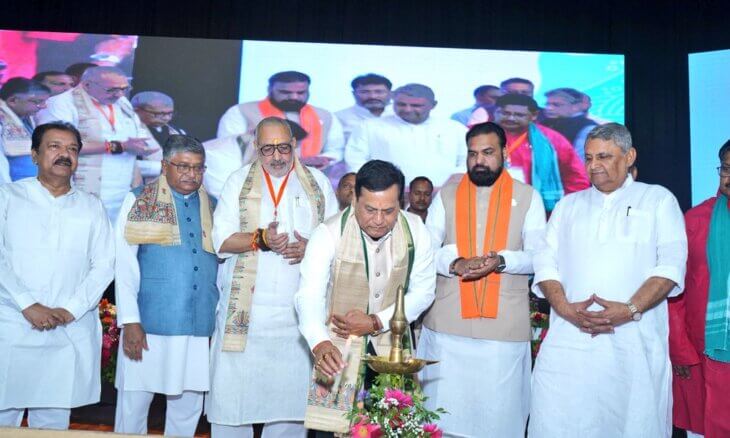
The Ministry of Ports, Shipping and Waterways has unveiled a comprehensive plan focused on the development of National Waterway-1 (NW-1), particularly along the River Ganga in Bihar. The announcements were made during the inaugural Consultative Workshop on Inland Waterways Development, held in Patna, marking the first such initiative in the state.
As part of the infrastructure upgrade, Patna is under consideration for the implementation of a Water Metro system, modeled on the successful Kochi Water Metro. This initiative aims to introduce a modern, clean, and efficient urban mobility solution connecting both banks of the Ganga. Depending on the city’s geographical feasibility, the project may be implemented fully or in part.
Additionally, a dedicated ship repair and construction facility is to be established in Patna to support inland vessel operations. This facility is intended to strengthen the regional inland waterways ecosystem, enabling both maintenance and new vessel construction.
The workshop also saw the announcement of a Joint Task Force comprising representatives from the Bihar Government, the Ministry of Ports, Shipping and Waterways, and the Inland Waterways Authority of India (IWAI). The task force will explore sustainable development models for NW-1 within the state.
In support of skill development and institutional capacity building, the National Inland Navigation Institute (NINI), located in Patna, is being upgraded into a Centre of Excellence. The planned enhancement includes substantial investment for modernization and the addition of new facilities.
Efforts to improve passenger and cargo movement on NW-1 include the development of 16 new community jetties, augmenting the existing 21 in Bihar. These facilities are expected to improve market access for local farmers, small traders, and businesses, enhancing their link to riverine trade routes. The city of Patna is being developed as a multimodal logistics hub for northern Bihar, while the Kalughat Terminal is being positioned to facilitate trade with Nepal, offering seamless integration with road and rail networks.
Further strengthening passenger mobility, four locations will be equipped with Quick Pontoon Opening Mechanisms (QPOMs), and two Ro-Pax terminals will be established. Two hybrid electric catamaran vessels will also be deployed to promote green transportation solutions across the river.
These initiatives are aligned with the broader Jal Marg Vikas Project (JMVP), which aims to develop NW-1 from Haldia to Varanasi over a 1,390 km stretch. As of May 2025, the project has reached 68.86 per cent physical completion. Since its approval in 2018 with an outlay of Rs 5,061.15 crore, JMVP has driven a 220 per cent increase in traffic, rising from 5.05 million metric ton (MMT) in 2014–15 to 16.38 MMT in 2024–25.
Key components of JMVP include the development of multimodal terminals, fairway maintenance, navigational aids, and vessel-friendly infrastructure. Provisions such as community jetties, cruise terminals, cargo aggregation centers, and green ship maintenance systems like zero liquid discharge, bio-toilets, and acoustic pingers to protect aquatic wildlife have also been integrated.
Nationally, the inland waterways sector has expanded rapidly since 2014. From just three operational National Waterways (NWs), the number has increased to 29 across 11 states. Out of the total 111 NWs declared, 124 terminals—comprising 27 permanent and 97 floating terminals—are currently operational across 23 states and 4 Union Territories.
Cargo movement on these waterways reached 145.84 MMT in FY 2024–25, with a compound annual growth rate of 20.89% since 2014. The major cargo includes coal, iron ore, clinker, limestone, cement, fly ash, sand, vehicles, and passengers, underscoring the waterways’ growing role in bulk transport.
To support the network, IWAI has accelerated longitudinal surveys, currently covering 10,000 km per month to assess Least Available Depth (LAD). The coverage will expand from 11 states in FY24 to 22 states and 4 UTs by FY27. A Rs 35,000 crore project pipeline has been outlined for the next five years, including public-private partnership (PPP) initiatives.
The government’s commitment is further reflected in the increased annual budget allocation, which rose by 48 per cent from Rs 1,203 crore in FY24 to Rs 1,752 crore in FY25. These concerted efforts signal a transformative shift in Bihar’s water-based connectivity, trade facilitation, and sustainable urban transport.

